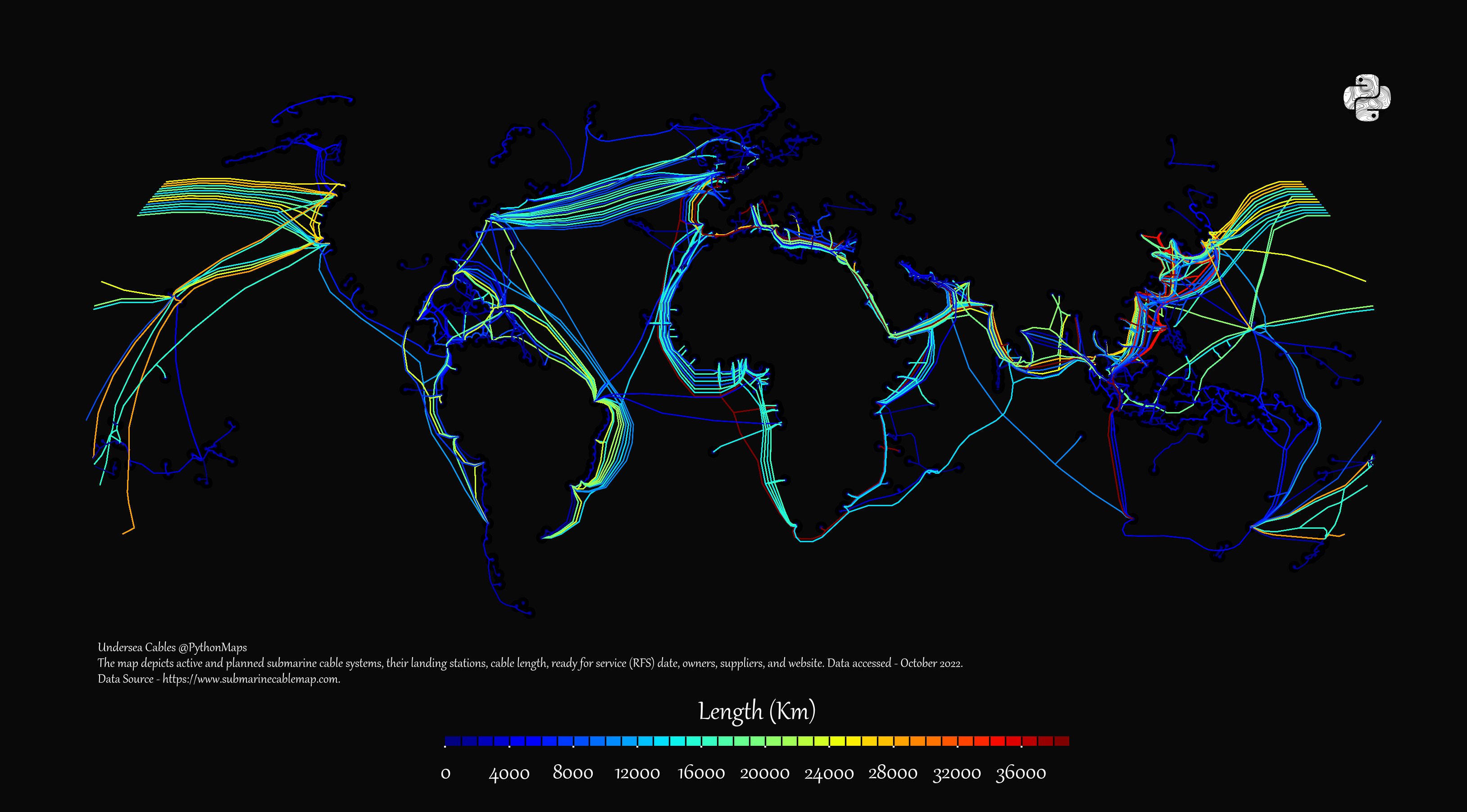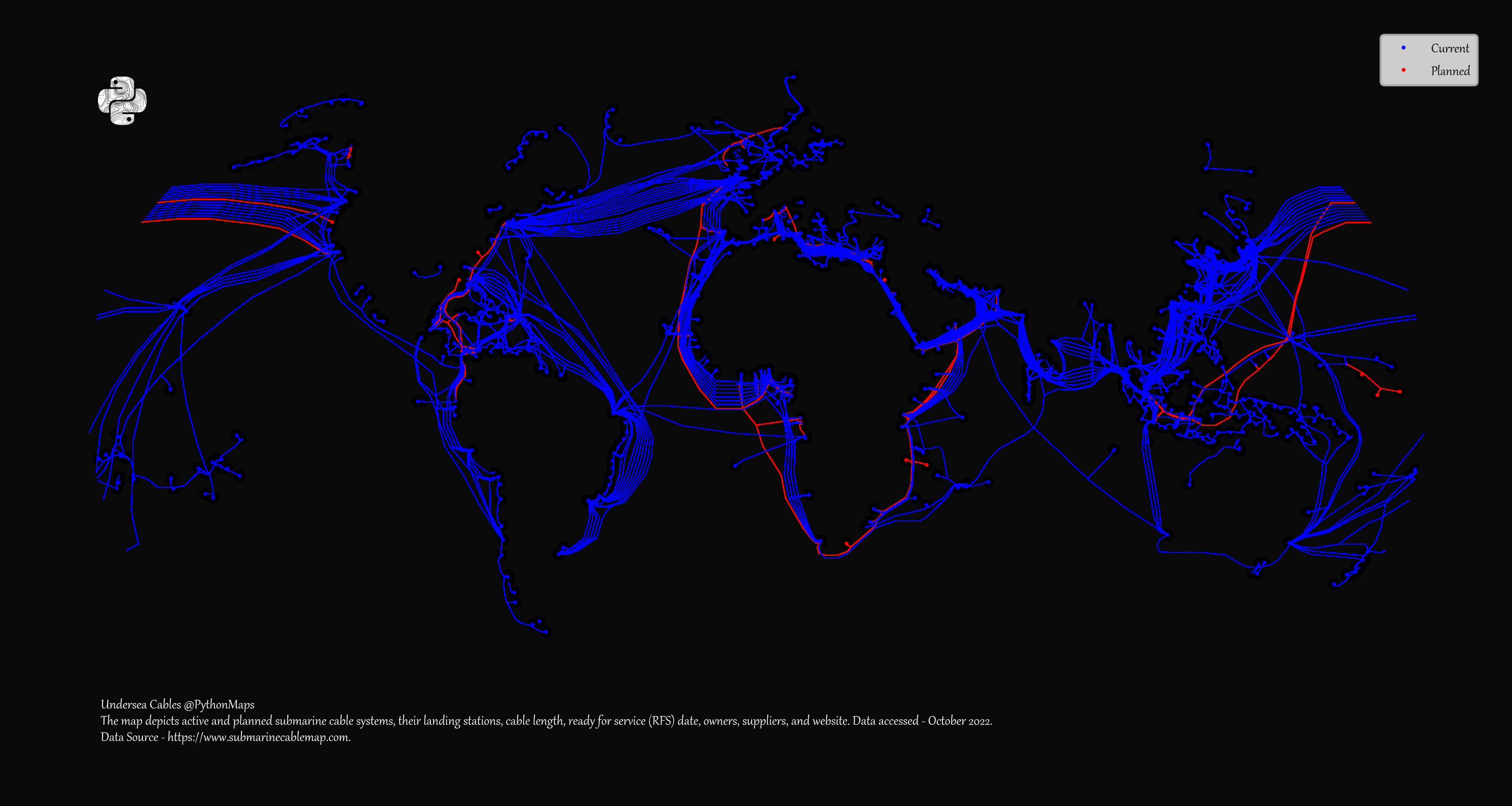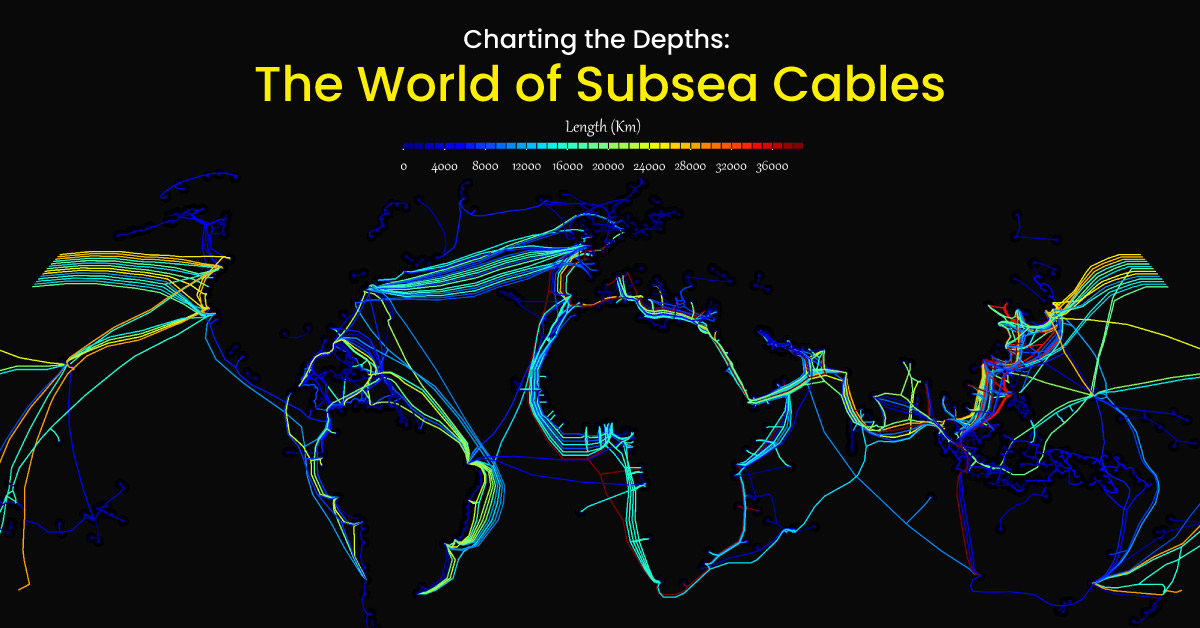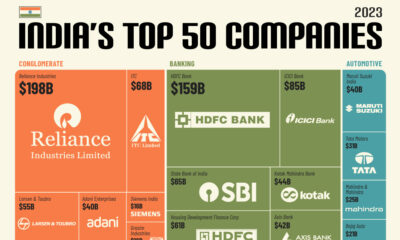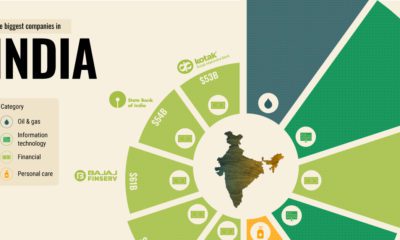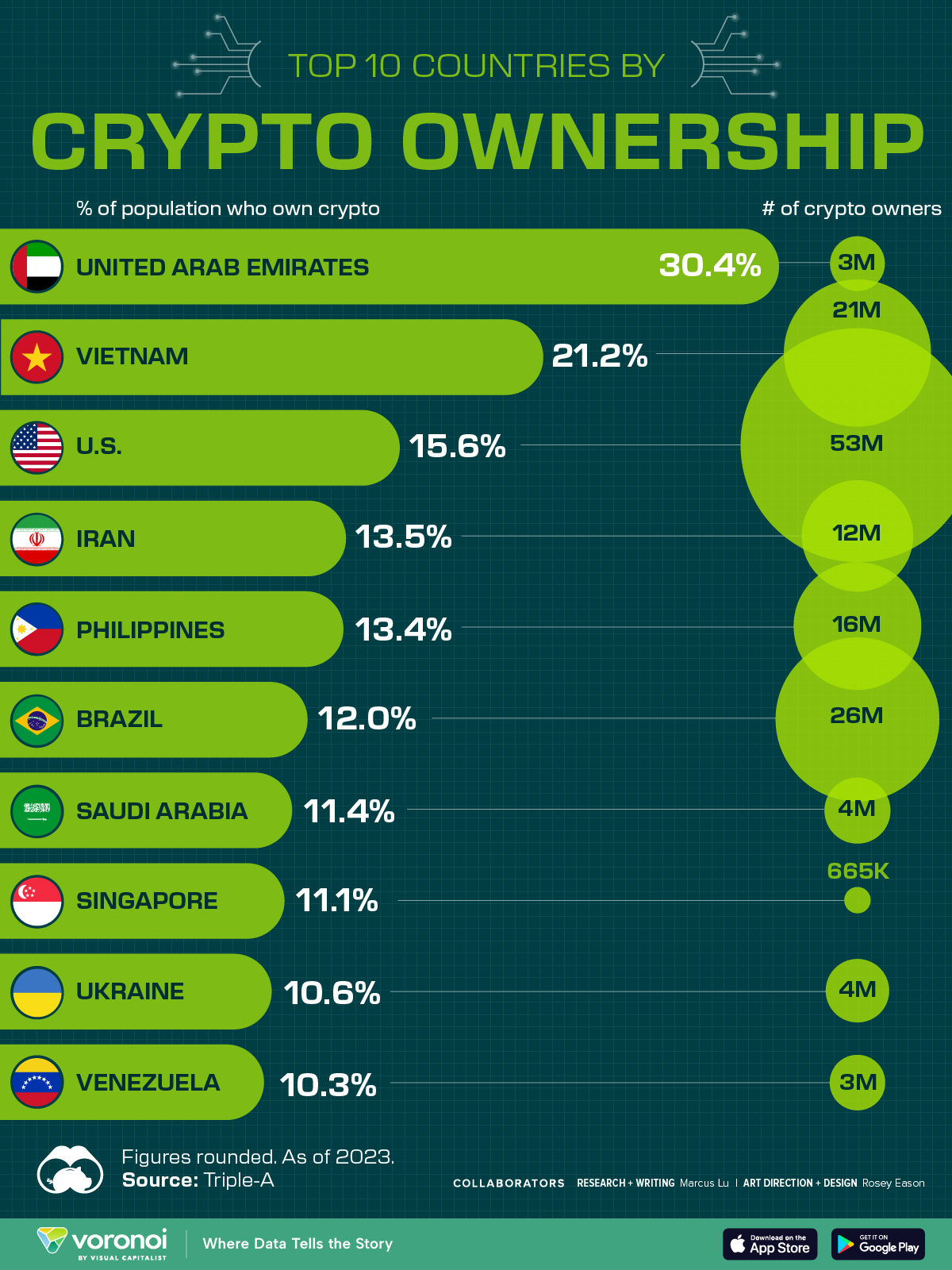Technology
Charting the Depths: The World of Subsea Cables
Charting the Depths: The World of Subsea Cables
Data may be stored in the “cloud,” but when it comes to sending and receiving data, a lot of that action is actually happening along the depths of the ocean floor.
Hidden beneath the waves, these subsea cables account for approximately 95% of international data transmission.
These maps, by Adam Symington, use information from TeleGeography to show the distribution of subsea cables around the planet.
Wired for Connectivity
It’s estimated that there are nearly 1.4 million kilometers (0.9 million miles) of submarine cables in service globally. They ensure emails, content, and calls find their way, linking colossal data centers and facilitating worldwide communication.
Currently, there are 552 active and planned submarine cables:
Submarine cables harness fiber-optic technology, transmitting information via rapid light pulses through glass fibers. These fibers, thinner than human hair, are protected by plastic or even steel wire layers.
Cables usually have the diameter of a garden hose, but often with added armor near the shore. Coastal cables are buried under the seabed, hidden from view on the beach, while deep-sea ones rest on the ocean floor.
Length varies widely, from the 131-kilometer CeltixConnect cable, connecting Dublin, Ireland, and Holyhead, UK, to the sprawling 20,000-kilometer Asia America Gateway cable, connecting San Luis Obispo, California, to Hawaii and Southeast Asia:
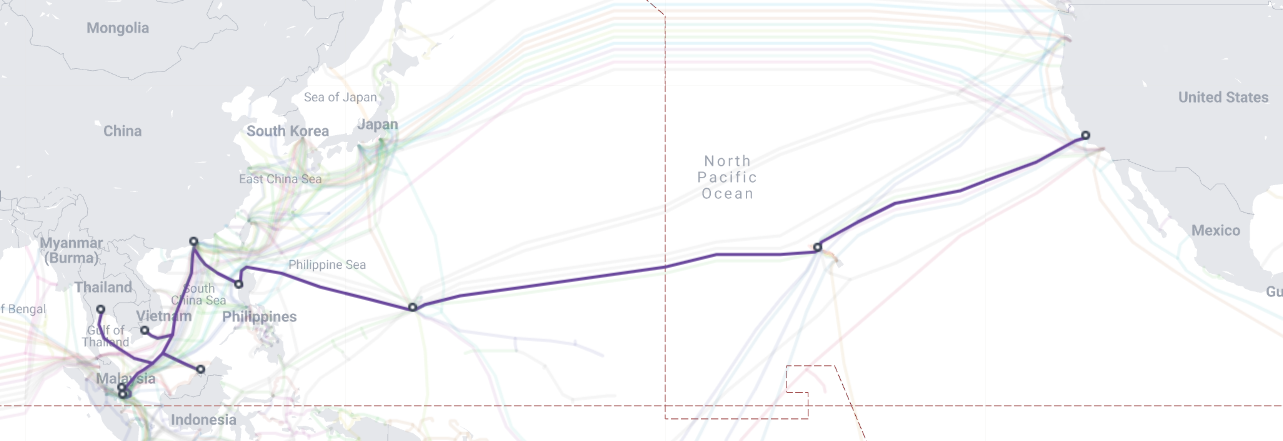
Asia America Gateway. Image: TeleGeography
With the current technology, cables are designed to last 25 years at least but are often replaced because of damage. Nearly two-thirds of cable damage is caused by fishing vessels and ships dragging anchors.
The Bottom Line
Traditionally dominated by telecom carriers, the makeup of the subsea cable market has shifted over more recent decades. Tech giants like Google, Facebook, Microsoft, and Amazon now heavily invest in new cables.
With data demand surging, at least $10 billion is expected to be invested in subsea cables worldwide between 2022 and 2024, driven by cloud service providers and content streaming platforms.
Even with the growth of satellites in telecom, cables still can carry far more data at a much lower cost than satellites. In fact, according to TeleGeography, satellites account for less than 1% of all U.S. international capacity.

This article was published as a part of Visual Capitalist's Creator Program, which features data-driven visuals from some of our favorite Creators around the world.
Technology
Countries With the Highest Rates of Crypto Ownership
While the U.S. is a major market for cryptocurrencies, two countries surpass it in terms of their rates of crypto ownership.
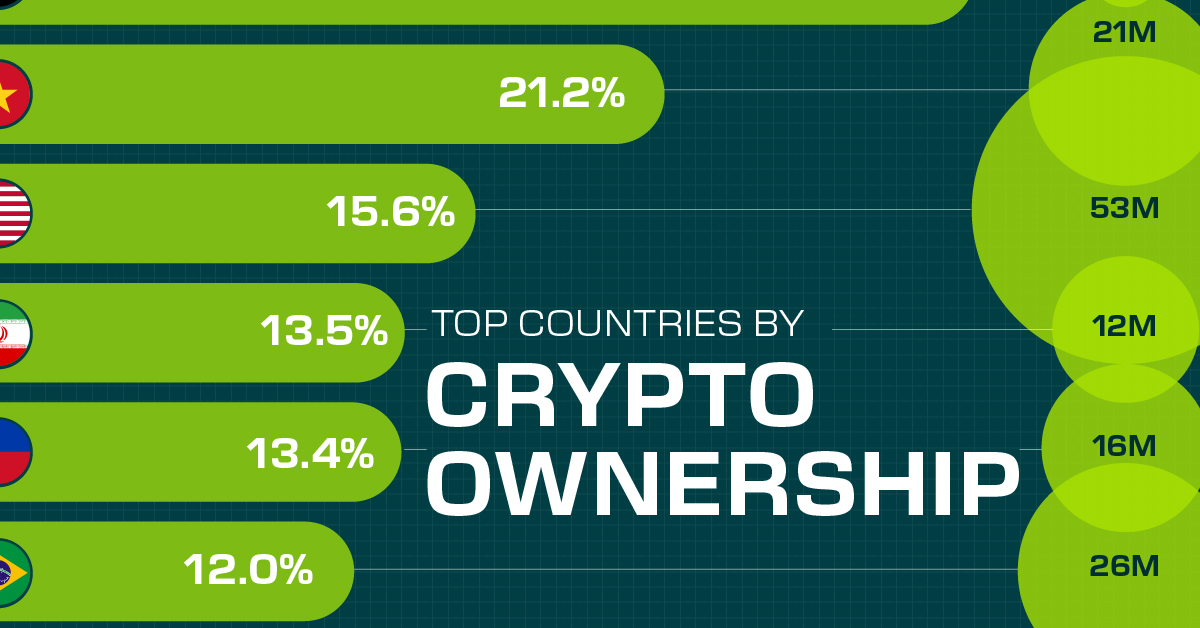
Countries With the Highest Rates of Crypto Ownership
This was originally posted on our Voronoi app. Download the app for free on iOS or Android and discover incredible data-driven charts from a variety of trusted sources.
This graphic ranks the top 10 countries by their rate of cryptocurrency ownership, which is the percentage of the population that owns crypto. These figures come from crypto payment gateway, Triple-A, and are as of 2023.
Data and Highlights
The table below lists the rates of crypto ownership in the top 10 countries, as well as the number of people this amounts to.
| Country | % of Population Who Own Crypto | # of Crypto Owners |
|---|---|---|
| 🇦🇪 United Arab Emirates | 30.4 | 3M |
| 🇻🇳 Vietnam | 21.2 | 21M |
| 🇺🇸 U.S. | 15.6 | 53M |
| 🇮🇷 Iran | 13.5 | 12M |
| 🇵🇭 Philippines | 13.4 | 16M |
| 🇧🇷 Brazil | 12 | 26M |
| 🇸🇦 Saudi Arabia | 11.4 | 4M |
| 🇸🇬 Singapore | 11.1 | 665K |
| 🇺🇦 Ukraine | 10.6 | 4M |
| 🇻🇪 Venezuela | 10.3 | 3M |
Note that if we were to rank countries based on their actual number of crypto owners, India would rank first at 93 million people, China would rank second at 59 million people, and the U.S. would rank third at 52 million people.
The UAE Takes the Top Spot
The United Arab Emirates (UAE) boasts the highest rates of crypto ownership globally. The country’s government is considered to be very crypto friendly, as described in Henley & Partners’ Crypto Wealth Report 2023:
In the UAE, the Financial Services Regulatory Authority (FSRA-ADGM) was the first to provide rules and regulations regarding cryptocurrency purchasing and selling. The Emirates are generally very open to new technologies and have proposed zero taxes for crypto owners and businesses.
Vietnam leads Southeast Asia
According to the Crypto Council for Innovation, cryptocurrency holdings in Vietnam are also untaxed, making them an attractive asset.
Another reason for Vietnam’s high rates of ownership could be its large unbanked population (people without access to financial services). Cryptocurrencies may provide an alternative means of accessing these services without relying on traditional banks.
Learn More About Crypto From Visual Capitalist
If you enjoyed this post, be sure to check out The World’s Largest Corporate Holders of Bitcoin, which ranks the top 12 publicly traded companies by their Bitcoin holdings.
-

 United States1 week ago
United States1 week agoMapped: Countries Where Recreational Cannabis is Legal
-

 Healthcare2 weeks ago
Healthcare2 weeks agoLife Expectancy by Region (1950-2050F)
-

 Markets2 weeks ago
Markets2 weeks agoThe Growth of a $1,000 Equity Investment, by Stock Market
-

 Markets2 weeks ago
Markets2 weeks agoMapped: Europe’s GDP Per Capita, by Country
-

 Money2 weeks ago
Money2 weeks agoCharted: What Frustrates Americans About the Tax System
-

 Technology2 weeks ago
Technology2 weeks agoCountries With the Highest Rates of Crypto Ownership
-

 Mining2 weeks ago
Mining2 weeks agoWhere the World’s Aluminum is Smelted, by Country
-

 Personal Finance2 weeks ago
Personal Finance2 weeks agoVisualizing the Tax Burden of Every U.S. State

